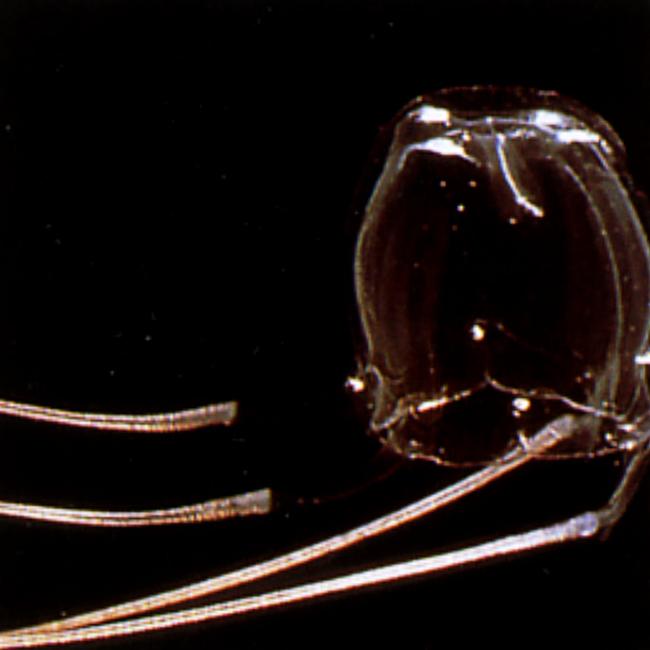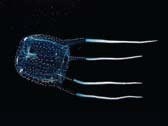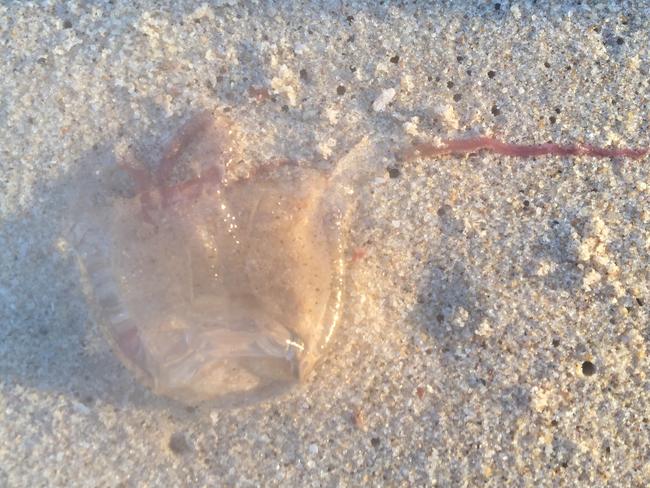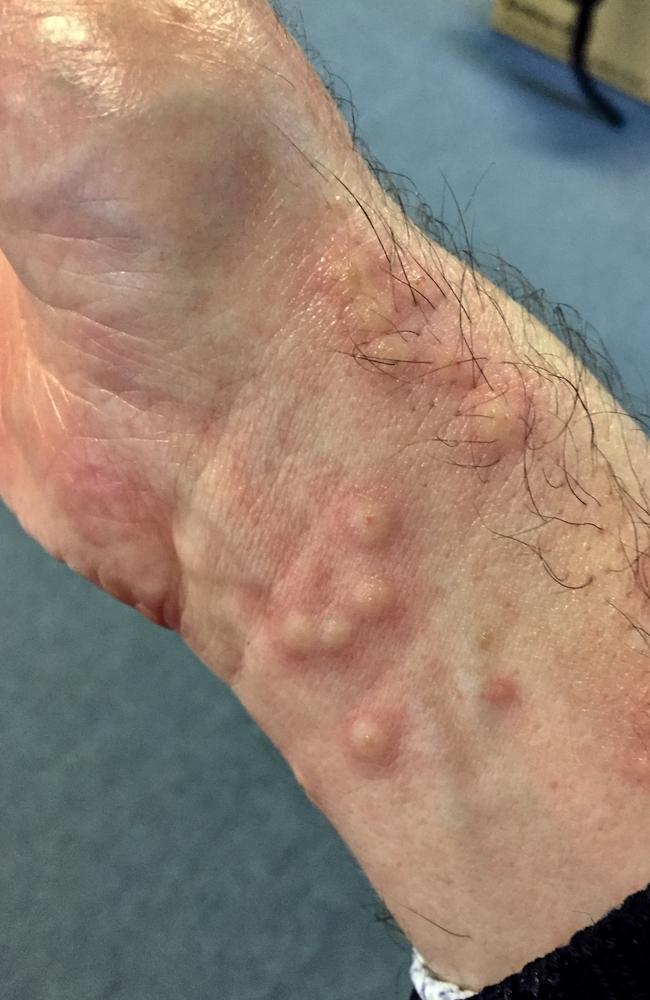Pesky jimble jellyfish deliver painful stings to swimmers on northern beaches
Jimble jellyfish are pesky marine creatures that can deliver a nasty sting — and they’re along the Sydney coast right now.

Manly
Don't miss out on the headlines from Manly. Followed categories will be added to My News.
Ocean swimmers and surfers are increasingly complaining about being stung by little jellyfish that recently appeared in numbers on Sydney’s northern beaches.
Jimbles, tiny native marine stingers measuring just 3.5cms, are being washed into ocean pools and hitting lap swimmers with their tiny tentacles.
They are related to the notoriously deadly box jellyfish, found in Australia’s more northern waters, but are nowhere near as venomous.
But they can still deliver a nasty sting that can result in several painful, red welts on their human victims.
Jellyfish expert Claire Rowe, the acting collection manager for marine invertebrates at the Australian Museum Research Institute, confirmed there was a current influx — or bloom — of jimbles in Sydney waters.

Locals around Narrabeen have been on social media saying they’ve been stung while swimming in the Narrabeen ocean pool.
The jimble has a transparent, box-shaped bell, 3cm to 4cm long, and a trail of tentacles measuring 10cm to 15cm long.They are difficult to spot.

Ernest Michel, a regular swimmer at the Narrabeen ocean pool, said he felt a sting, that left raised welts on his upper arm while doing laps last week.
Mr Michel, who lives at Dee Why, but swims at Narrabeen at least once a week, said the painful sting took him by surprise.

“I couldn’t see anything in the water, but it just really felt like a jellyfish sting.
“I’ve been trying to work out what is was. I reckon it was a jimble.”
Dr Rowe said on Tuesday that jimbles typically appear when there’s a combination of the right environmental conditions, such as particular winds, tides, waves and water temperature.
“They are usually around for a few weeks and then they move on.

“They can bloom once or twice every year all along the Sydney beaches. It’s common for surfers and swimmers along the coast to report being stung.
“We’ve also had reports of them earlier this year on the Central Coast for a couple of weeks.”
Dr Rowe said it was difficult to predict when and where jimbles will appear.
“But they typically occur at the end of summer, beginning of winter. That’s when we get most of the reports.

“The thing with jimbles, they are probable always around to some degree, but it could be the temperature this time of year that’s causing them to bloom.”
Dr Rowe advised that during a jimble bloom people wear protective clothing such as stinger suits and rash vests to avoid being stung.
“When the stinging cells touch the skin, it’s basically a mini-harpoon that releases the stinging cells and it can cause quite a reaction.

“It can be painful and cause swelling. If stung near the throat, it can cause it to swell and close up.”
Dr Rowe advised anyone stung by a jimble to wash the sting with vinegar and apply a coldpack.
If it gets worse, seek immediate medical attention.
“Definitely don’t apply freshwater, that will just cause more stinging cells to be released.”
For more information on jimbles and what do to if stung click here.





